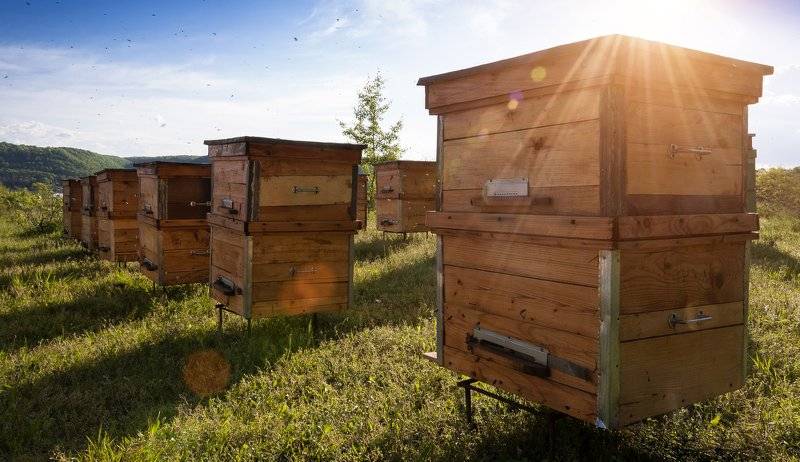Deciding to start your own beekeeping business is a big commitment. It will eventually become a way of life. There are many decisions to make, including the size and type of hive. Many people don’t realize that there are actually several types of beehives to choose from.
If you are considering buying a beehive, we can help. We share our insider knowledge so you can make the best decision.
What is the main definition of beehive?
A beehive is a man-made structure. It is a man-made place where bees live, reproduce and produce resources such as honey.
What are beehives made of?
Artificial beehives are usually made of wood, but wild bees usually build their own. These are often similar to bird nests, but are simply called beehives or nests. A common place to find a wild beehive is on a hollow tree.

Bees are gregarious, which means they live in large colonies. Bees usually choose a location above the ground to keep away from honey hunters. They also tend to choose south-facing and downward-facing entrances.
Wild bees are cave dwellers; this trait also makes them easy to domesticate. In the wild, scout bees often infest a fairly large enclosed space. It must be able to absorb a lot of honey, comb and brood.
When building a hive, bees remove the outer bark to smoothen the walls. They then smear and seal the hive with propolis (also known as propolis). Propolis is made from plant and tree resins, which they use to build and hold wax combs.
Inside the hive, you’ll find densely packed hexagonal cells. These are composed of beeswax, which worker bees produce from special glands in their abdomens. These cells are also called honeycombs because this is where bees store their honey.
Considerations when choosing a beehive
There are a few things to consider when choosing the right beehive. Becoming a new beekeeper can be time-consuming, and you want to make sure you’re up to the task.
Think about why you want a beehive
One of the most important things to consider is why do you want a beehive and what is it used for?
Pollination
Many farmers or gardeners maintain beehives for the simple purpose of pollination. Bees are one of the most important members of our ecosystem. Worker bees typically visit more than a hundred flowers while foraging, resulting in a lot of pollination.
If you’re looking for a lusher garden, a small beehive will suffice. The cut resembles a small box that can easily be tucked away in a garden corner.
Educational reasons
Bees are fascinating creatures. Although we already know a lot about them, there is still more to learn. Maybe you want to study bees but don’t have time to pick honey. Don’t worry; a small beehive doesn’t require much maintenance.
You can get to know the bees up close. You might even consider a portable beehive if you need to take it to a nature center or school.
Portable beehives should be easy to install and remove. It should also be easy to carry. Some hives even offer the option to swap one side for plexiglass, so you can study bees without disturbing them.
Honey harvest
Harvesting your own liquid gold is the dream of most beekeepers. It’s not the easiest task and requires a full set of gear, but it’s worth it.
If you want to produce a lot of honey, you need bigger hives. The hive must be large enough for the bees to produce enough honey for themselves and you.
Many first-time beekeepers choose hives where they can add more honey attachments after the bees fill them up. It will also make your job easier if hive allows normal equipment.
Search for the appropriate location
The location of the hive is everything. Although bees are very adaptable to their environment, you should make sure you do everything possible to help them thrive.
Bees cannot fly in cool temperatures because their flight muscles are not warm enough. Placing the hive in an area that gets early morning sunlight can give your bees a great start to the day.
However, the hive should not be placed in direct sunlight throughout the day, as this may cause the hive to overheat rapidly. A place with morning sun and afternoon shade is the perfect combination.
Consider your surroundings. If you live in a warm climate, your bees need more shade in the afternoon. Since bees live in cooler climates, they can use more sunlight.
In cooler regions, you may also want to consider purchasing metal covers for the hives. The sheet metal helps keep the hive at a comfortable temperature on cold nights.
What are the main types of beehives?
There are three main types of hives: Langstroth hives, Warré hives and Top-Bar hives. All are great for beekeeping, and the choice can be tricky. The most commonly used is the Langstroth hive, but that doesn’t mean other hives are bad.
Langstroth hive
The Beehive was designed in 1851 by Dr. L. L. Langstroth. Dr. Langstroth was a Massachusetts minister, but beekeeping was his hobby. The Langstroth hive was the first with a removable frame.
The removable frame makes it more accessible to beekeepers when they need to inspect the hive. It has quickly become a popular feature among beekeepers. Langstroth hives consist of one or two hives, an outer and inner cover, and a frame.
The best thing about Langstroth is that it’s very customizable, making it perfect for beginners just starting out with their first hive. Supers come in different sizes, so you can stack them however you want. You can choose between dark, medium and light.
There are also two options for width. You can choose the larger 10-frame or smaller 8-frame hives.
Which one to choose will depend on your preference for operability and modularity. The deep case is heavy at about 80 pounds, while the medium case weighs about 60 pounds.
For new beekeepers, we recommend purchasing two deep or three medium boxes. This provides plenty of room for bees, honey, and all the other wonderful things they produce. However, one of the downsides is the weight, which is not suitable for those who need to move the hive.
Shallow boxes are generally used to store food and supplies, not so much to expand the hive.
The Langstroth hive is by far one of the most suitable for honey production due to its ease of access. It’s also one of the most popular beehives in North America, making it easier to find the parts and accessories you need.
Also, this type of beehive is relatively inexpensive. It can easily expand your apiary to multiple large hives.
Langstroth hives are known for their removable frames. The Langstroth hive was also the first type of hive that actually allowed bees to build their own hives.
The Langstroth hive allows you to expand it to accommodate your growing hive using one of two methods. The first is called Supering and you can add boxes on top of the hive. The second is called Nadiring and you can add boxes to the bottom of the hive.
Advantages
- You can choose between depth and width, which makes it customizable.
- You can easily expand your beekeeping business at low cost.
- Many resources and accessories are available.
- Beehives are manufactured to standard specifications so you can easily find components and mix them as you like.
- The frames have four sides, which makes them very stable.
- You can easily expand the hive as the colony grows.
- Easy access to honey harvest.
- Removable if necessary.
- Good ventilation.
Disadvantages
- The crate is heavy.
- Rectangular frames don’t come naturally to bees. Bees actually prefer tall, round structures.
Warré Hive
The Warré hive (pronounced war-ray) was invented in the early 1900s by a French priest named Emile Warré. He spent his life researching different types of beehives before finally inventing the structure.
Warré honeycombs quickly became popular in the United States. However, it has yet to beat Langstroth. The design is very simple and focuses on making the hive as natural as possible for the bees.
It looks like a mini Langstroth; however, the Warré Honeycomb has no frame but vertical bars. It includes a natural comb and retains the smell and warmth of the nest.
Vertical strips usually have a wedge or some sort of guide to help bees build their hives, as they do in nature. Similar to Langstroth, the Warré Hive consists of several boxes. However, these boxes are square, not rectangular.
Whenever you need to expand the hive for a growing colony, you will need to add a crate underneath. Many beekeepers prefer the Warré hive because it requires little maintenance and is inexpensive. It also doesn’t need to be checked frequently.
When Emile Warré designed his beehive, he wanted to create something simple for beekeepers. You can harvest honey by adding new boxes below and removing boxes above. Warré used to add empty boxes in the spring and harvest the top boxes in the fall.
Warré found that it was better to harvest the honey several times a year. This compares favorably to harvesting the combs one by one every few weeks, which disrupts the colony and distracts them from their work.
Bees start building their hives and storing honey in the upper box. When they fill up, the bees move down, just like in nature. No chemical treatment is required either, as the comb is not reusable.
One downside of the Warré hive is that it is much smaller compared to the Langstroth and Top Bar hives. However, many beekeepers prefer to ignore this little problem due to the convenience of this hive.
Advantages
- Provides a natural way for bees to build their hives.
- It’s low maintenance, all you have to do is remove the top box and add a new one underneath.
- A good choice for the runaway beekeeper.
- You can manage the entire box instead of combing it one by one.
- Simple.
- Keep the hive at a good temperature.
- It looks so pretty and is perfect for any garden or yard.
- You can easily build one yourself.
Disadvantages
- Warré beehives are slightly more expensive than Langstroth.
- Components are harder to come by.
- Adding super usually requires another pair of hands.
- There is no frontal feeding, making it difficult to feed the bees when needed.
- Harvesting honey isn’t easy because most tools are designed for frames, not poles.
Top bar hive
Top bar honeycomb designs have been around for thousands of years. Researchers believe beekeepers in ancient Greece used the same concept, using pots and baskets with sticks on top.
Top bar beehives are all about simplicity. It’s a bit like a Warré hive, but here the bars are horizontal. Sticks with a small amount of wax strips are attached to the underside of the hive to promote the honeycomb structure. Bees build their hives above the hive cavity, and wax strips or wedges help keep the hive straight.
It allows the bees to build the hive naturally downwards. No quad frame or foundation required.
Top bar beehives provide a very simple way of keeping bees. Beehives are easy to build and manage, and they can be easily removed if needed.
Some beekeepers choose to place a plexiglass panel on one of the sides. Then they can watch the hard work of the colony. This also makes this hive ideal for educational purposes.
Top bar hives require some supervision, mainly to ensure that the colony has enough space. However, the inspection is not time-consuming and is easier if there is a full-length window.
As your colony grows and honey production is in full swing, you will need to add more bars. You can do this by moving the divider down into the honeycomb cavity, then adding empty strips.
To keep your bees warm during the colder months, shrink the hive cavity after the last honey collection. Then your bees have less space to heat.
Bees living in top bar hives sometimes attach their hives to the walls of the hive. If so, you’ll need to detach the comb from the hive before you can remove these branches.
Harvesting honey is so easy; you don’t even need an extractor. All you have to do is collect the comb, crush it, and pull it tight. You can even make your own filtration system using food grade buckets.
Advantages
- The poles provide a natural way for bees to build their hives.
- Easy honey collection, no need for a honey machine.
- The comb is easy to remove.
- Inspection is fast.
- Bees stay calm during the inspection because you only open a small part of the hive.
- Cheap and can even be built by oneself.
- There’s no need to save Supers because they don’t.
Disadvantages
- Due to the vast space, it is difficult for bees to regulate the temperature.
- Frequent monitoring is required.
- Bees tend to attach the comb to the wall, which requires more work on your part.
- Raising queens can be difficult.
In summary
Choosing a hive type ultimately comes down to personal preference. If you produce a lot of honey or even want to expand your apiary, Langstroth is your best choice. If you’re looking to create a more natural habitat for your pollinator friends, a top bar or Warré hive will do the job.

